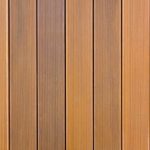Diced woodworking, also known as segmented or patterning woodworking, is a stunning technique that adds a unique and intricate design to wood projects. This article will provide an in-depth guide on how to make diced woodworking, covering everything from selecting the right wood and tools to cutting techniques and assembling the final product.
The appeal of diced woodworking lies in its ability to create visually striking patterns and designs that can elevate any piece of furniture or decor. Whether it’s creating geometric shapes, intricate mosaics, or bold contrasts, diced woodworking allows for endless creativity and customization in woodworking projects.
In this comprehensive guide, we’ll delve into the process of selecting the right wood for dicing, essential tools and materials needed for the job, planning and designing your project, cutting and dicing techniques, assembling and gluing the pieces together, sanding and finishing for a polished look, troubleshooting common issues, and tips for success in achieving precision.
Whether you’re a seasoned woodworker or just starting out, this guide will equip you with the knowledge and skills to embark on your own diced woodworking projects with confidence.
Selecting the Right Wood for Dicing
When it comes to making diced woodworking, selecting the right type of wood is crucial for achieving the desired results. Different wood types offer unique grain patterns and colors that can greatly impact the overall aesthetic of your diced woodworking project. Here, we will discuss the various factors to consider when choosing the perfect wood for dicing and the different wood types suitable for this woodworking technique.
Overview of Wood Types
Some of the most popular wood types used in diced woodworking include maple, oak, walnut, cherry, and mahogany. Each type of wood offers its own distinct characteristics such as grain pattern, color variations, and hardness. Maple, for instance, is known for its fine and uniform grain while walnut boasts a rich, dark brown color with striking grain patterns. Understanding these characteristics can help you choose which type of wood will best complement your design and achieve the desired aesthetic.
Factors to Consider
When selecting the right wood for dicing, it’s important to consider factors such as hardness, workability, and stability. Hardwoods like oak and cherry are ideal for diced woodworking due to their durability and ability to hold intricate designs without splintering. Additionally, consider the ease of working with a particular wood type – some woods may be more challenging to cut and shape than others.
Finally, stability is crucial to ensure that your diced woodworking project remains structurally sound over time. Certain woods are more prone to warping or shrinking under different environmental conditions.
By carefully considering these factors and understanding the characteristics of different wood types suitable for dicing, you can make an informed decision when selecting the right wood for your next woodworking project.
Tools and Materials Needed
Selecting the right tools and materials is crucial for successful diced woodworking projects. Having the essential equipment and quality materials can make a significant difference in the outcome of your project. Here’s what you’ll need to get started with diced woodworking:
- Circular Saw or Table Saw: These are essential for making precise cuts on the wood.
- Router: A router is used for creating grooves and patterns in the wood pieces.
- Clamps: Clamps are necessary to hold the diced wood pieces together during the gluing process.
- Safety Gear: Safety glasses, gloves, and ear protection are important when working with woodworking tools.
In addition to the tools, it’s crucial to select the right materials for achieving the best results in diced woodworking. The type of wood used can greatly impact the finished product, so here are some recommended materials:
- Hardwoods: Woods like maple, cherry, and oak are popular choices for diced woodworking due to their durability and attractive grain patterns.
- Exotic Woods: For a unique look, consider using exotic woods such as padauk or purpleheart for your projects.
- Adhesives: High-quality wood glue or epoxy resin is necessary for securing the diced wood pieces together effectively.
By having the proper tools and high-quality materials, you can ensure that your diced woodworking projects turn out beautifully. Investing in good equipment and selecting top-notch materials will help you achieve precision and accuracy in your work.
Whether you’re a seasoned woodworker or just starting out, having the right tools and materials can make all the difference in embarking on successful dice woodworking projects.
Planning and Designing Your Diced Wood Project
When planning and designing a diced wood project, it’s important to consider the type of design you want to achieve and the overall pattern of the dice. Diced woodworking allows for a wide range of creative possibilities, from simple geometric patterns to more intricate and complex designs.
Before starting your project, take the time to sketch out various design ideas on paper or using digital software. This will help you visualize how the final product will look and make any necessary adjustments before cutting into the wood.
One tip for creating patterns in diced woodworking is to use contrasting wood colors or grain patterns to add visual interest to your project. Mixing different types of wood can result in stunning designs that highlight the unique characteristics of each wood species. Additionally, if you plan on incorporating different shapes within your diced wood project, ensure that your design carefully aligns them for a cohesive and professional appearance.
Another aspect of planning and designing your diced wood project is considering the size and dimensions of the dice. Depending on whether you want larger or smaller dice, this will affect the overall look and feel of the finished piece. It’s also essential to measure and mark your wood accurately before cutting to ensure that all dice are uniform in size.
Furthermore, having an understanding of basic woodworking principles such as joinery and grain direction will greatly benefit your design process. Knowledge of how certain cuts will affect stability, directionality of grains within sections, and potential moisture changes will inform better decisions needed for successful results in diced woodworking projects.
| Planning Tips | Design Considerations |
|---|---|
| Sketch out design ideas | Consider contrasting colors or grain patterns |
| Measure wood accurately | Knowledge of joinery principles |
Cutting and Dicing Techniques
When it comes to creating diced woodworking, the cutting and dicing techniques are crucial in achieving precise and intricate patterns. Whether you are creating a geometric design or a more abstract pattern, the following steps will guide you on how to make diced woodworking with clean and accurate cuts.
1. Measure and Mark: Before making any cuts, carefully measure and mark your wood according to your desired pattern. Use a square ruler and pencil to ensure straight lines and precise angles.
2. Use a Table Saw: A table saw is commonly used for making straight cuts in woodworking. Set the blade to the desired height for your dicing depth, and use a miter gauge or fence to guide your wood through the saw for accurate cuts.
3. Miter Saw for Angled Cuts: For angled cuts in your diced woodworking project, a miter saw is essential. Adjust the angle of the saw blade to match your design, and use the miter gauge to secure your wood at the correct angle before cutting.
4. Band Saw for Curves: If your pattern includes curved lines or intricate shapes, a band saw is ideal for achieving smooth curves in your diced wood. Take your time maneuvering the wood through the blade for precise cuts.
5. Chisel for Detail Work: Sometimes, finer details may require manual work with a chisel. A sharp chisel can help clean up edges and corners to ensure a professional-looking finish for your diced woodworking project.
Remember, safety is paramount when using these cutting tools – always wear appropriate safety gear such as goggles and gloves, and follow all manufacturer guidelines for operating power tools effectively.
By following these cutting and dicing techniques, you can create stunning patterns and designs in woodworking that will impress with their precision and beauty. Whether you are looking to add interest to furniture pieces or craft unique art installations, mastering these techniques will elevate your woodworking projects to new heights of creativity and craftsmanship.
Assembling and Gluing Diced Wood
When it comes to creating a project using diced woodworking, the assembly of the wood pieces is a crucial step in achieving the desired outcome. Whether you are working on a decorative art piece or functional furniture, properly assembling the diced wood will ensure the strength and stability of your final product. Here are some important considerations and tips for assembling diced wood pieces.
One of the key aspects of assembling diced wood is selecting the right adhesive to bond the pieces together. Wood glue is commonly used for this purpose, as it provides a strong and durable bond when applied correctly. It’s important to use an adhesive that dries clear, especially if your project involves different wood species with varying colors. Additionally, consider using a glue with a longer open time to allow for adjustments during assembly.
Once you have applied the adhesive to your diced wood pieces, proper clamping is essential to ensure a tight bond and even pressure across all surfaces. Use clamps that are appropriate for the size of your project and apply consistent pressure without causing damage to the wood. It’s recommended to place small wooden blocks between the clamp jaws and your workpiece to prevent indentations from forming on the diced surfaces.
After assembling your diced wood pieces and applying adhesive, it’s crucial to allow sufficient drying time before further handling or finishing the project. Follow the manufacturer’s recommendations for drying time based on factors such as temperature and humidity in your workspace. Rushing this step can compromise the integrity of your assembled project and lead to weak joints.
By paying close attention to these considerations when assembling and gluing diced woodworking projects, you can achieve a professional-quality finished product with strong, enduring bonds between each piece. This ensures that your hard work and creative vision result in a durable and visually stunning creation that will be enjoyed for years to come.
Sanding and Finishing
Once you have completed the cutting and assembling of your diced woodworking project, the next crucial step is sanding and finishing. Sanding the wood dices is essential to achieve a smooth and polished surface, preparing it for the finishing touches. This process not only enhances the overall look of the project but also improves the feel and texture of the wood.
When it comes to sanding diced woodworking, it is important to start with a coarse-grit sandpaper to remove any rough edges or imperfections from the dices. Gradually move to finer grits for a smoother finish. This step requires patience and attention to detail, especially around intricate patterns or designs within the diced wood pieces.
After sanding, it’s time to apply a finish that suits your desired aesthetic and purpose for the project. As an essential part of woodworking, finishes protect the wood from moisture, enhance its natural color, and provide a final touch of style. Whether you prefer a natural look with clear sealants or want to add some color with stains, choosing an appropriate finish will bring out the beauty of your diced woodworking project.
Essential oil finishes like tung oil or linseed oil are popular choices for wooden crafts due to their ability to penetrate deeply into the wood fibers, providing long-lasting protection while maintaining a natural appearance. Other options include polyurethane varnishes for added durability, as well as shellac and lacquer for a glossy finish. Make sure to test different finishes on scrap wood before applying them to your main project in order to determine which one best suits your needs.
| Sanding Grits | Finishing Options |
|---|---|
| Coarse (60-100) | Natural oils (tung oil, linseed oil) |
| Medium (120-150) | Polyurethane varnish |
| Fine (180-220) | Shellac or lacquer |
Troubleshooting and Tips for Success
When it comes to diced woodworking, there are a few common issues that woodworkers may encounter. One of the main problems is achieving consistency in the size and shape of the dices. This can be particularly challenging when working with different types of wood or using various cutting techniques.
To troubleshoot this issue, it’s important to ensure that your cutting tools are sharp and properly calibrated. Additionally, taking the time to create a precise cutting guide or template can help maintain uniformity in your diced woodworking project.
Another challenge woodworkers face when making diced woodworking is achieving a strong and seamless bond between the dices during assembly. It’s crucial to use the right adhesive for the type of wood you’re working with, as well as ensuring that the surfaces are clean and properly prepared before gluing. If you find that your dices are not aligning properly during assembly, double-check your planning and design phase to ensure that all pieces fit together as intended.
To achieve success in diced woodworking, precision and accuracy are key. Taking time to measure and plan each cut will go a long way in creating a cohesive and visually appealing end product.
Additionally, experimenting with different cutting techniques and angles can result in unique patterns and designs within your diced woodworking project. Remember to take your time with each step of the process, from selecting the wood to finishing the project, as rushing through any part can lead to mistakes or imperfections.
In summary, while there may be challenges along the way when making diced woodworking, troubleshooting these issues is possible by paying attention to detail and utilizing proper techniques for precision and accuracy throughout the project. With careful planning, sharp tools, and attention to detail during assembly, woodworkers can achieve success in their diced woodworking endeavors.
Conclusion and Project Ideas
Diced woodworking is a versatile and visually appealing craft that can be used to create stunning decorative pieces, furniture, and even intricate wooden art. The process of creating diced woodworking involves cutting wooden blocks into smaller cubes and then arranging them to form unique patterns and designs. This style of woodworking adds a touch of intricacy and elegance to any woodworking project, making it a popular choice for both beginner and experienced woodworkers.
When embarking on a diced woodworking project, the first step is selecting the right type of wood for dicing. Some woods are better suited for this technique due to their grain pattern, density, and workability. Hardwoods like maple, walnut, cherry, or oak are often preferred for their durability and aesthetic appeal. It’s important to consider the color, grain consistency, and stability of the wood when choosing materials for your diced woodworking project.
In addition to choosing the right wood, having the appropriate tools and materials is crucial for successful diced woodworking. Essential tools such as a table saw, miter gauge, bandsaw, chisels, clamps, and sandpaper are necessary for cutting, shaping, assembling, and finishing the diced wood pieces. When it comes to materials, high-quality wood glue that provides a strong bond is essential for ensuring that the diced wood pieces stay firmly in place.
Additionally, proper sanding techniques and finishing options will contribute to achieving a polished final product. Understanding how to make diced woodworking requires attention not only in how your design looks but in selecting its material as well as employing precision cutting techniques.
Additional Resources for Diced Woodworking
In conclusion, diced woodworking is a creative and rewarding woodworking technique that can add a unique touch to various projects. From intricate patterns to geometric designs, the appeal of diced woodworking lies in its ability to elevate ordinary wood pieces into stunning works of art. By carefully selecting the right wood, using essential tools and materials, planning and designing with precision, and mastering cutting and dicing techniques, anyone can create impressive diced woodworking projects.
As you embark on your own diced woodworking journey, remember that the key to success lies in practice and patience. Don’t be afraid to experiment with different wood types, patterns, and finishing techniques to discover what works best for your projects. With dedication and attention to detail, you can master the art of diced woodworking and create one-of-a-kind pieces that showcase your craftsmanship.
If you’re looking for inspiration or guidance on your diced woodworking endeavors, there are plenty of additional resources available to help you along the way. Whether it’s tutorials, videos, or further reading materials, these resources can provide valuable insights and techniques that will expand your skills in the realm of diced woodworking.
Additionally, connecting with other woodworking enthusiasts and exploring recommended suppliers for materials and tools can further enrich your experience in this craft. Regardless of your level of expertise, there’s always something new to learn and explore in the world of diced woodworking.
Frequently Asked Questions
How Do You Make Wood Dice?
To make wood dice, you will need a block of hardwood, such as maple or oak, that is at least 2 inches square. Use a table saw to carefully cut the block into smaller cubes of equal size.
Then, sand down any rough edges and corners to ensure that each side is smooth and even. Finally, use a drill press to create the indents for the numbers on each side of the dice.
How Do You Make Giant Wooden Dice?
Making giant wooden dice follows a similar process to regular-sized wood dice, but on a larger scale. Start with a larger block of hardwood and use a table saw to cut it into larger cubes.
Sand down any rough edges and corners, then use a drill press to create the indents for the numbers on each side of the giant wooden dice.
Is Wood a Good Material for Dice?
Wood can be a good material for dice because it is durable, has a nice weight, and can be easily customized with different finishes or engravings. Additionally, wood dice have a classic and natural aesthetic appeal that many people appreciate.
However, it’s important to choose a hard and dense wood to ensure that the dice are long-lasting and resistant to wear and tear. Overall, wood can be an excellent material choice for making high-quality dice.

Hi everyone! I’m a woodworker and blogger, and this is my woodworking blog. In my blog, I share tips and tricks for woodworkers of all skill levels, as well as project ideas that you can try yourself.





